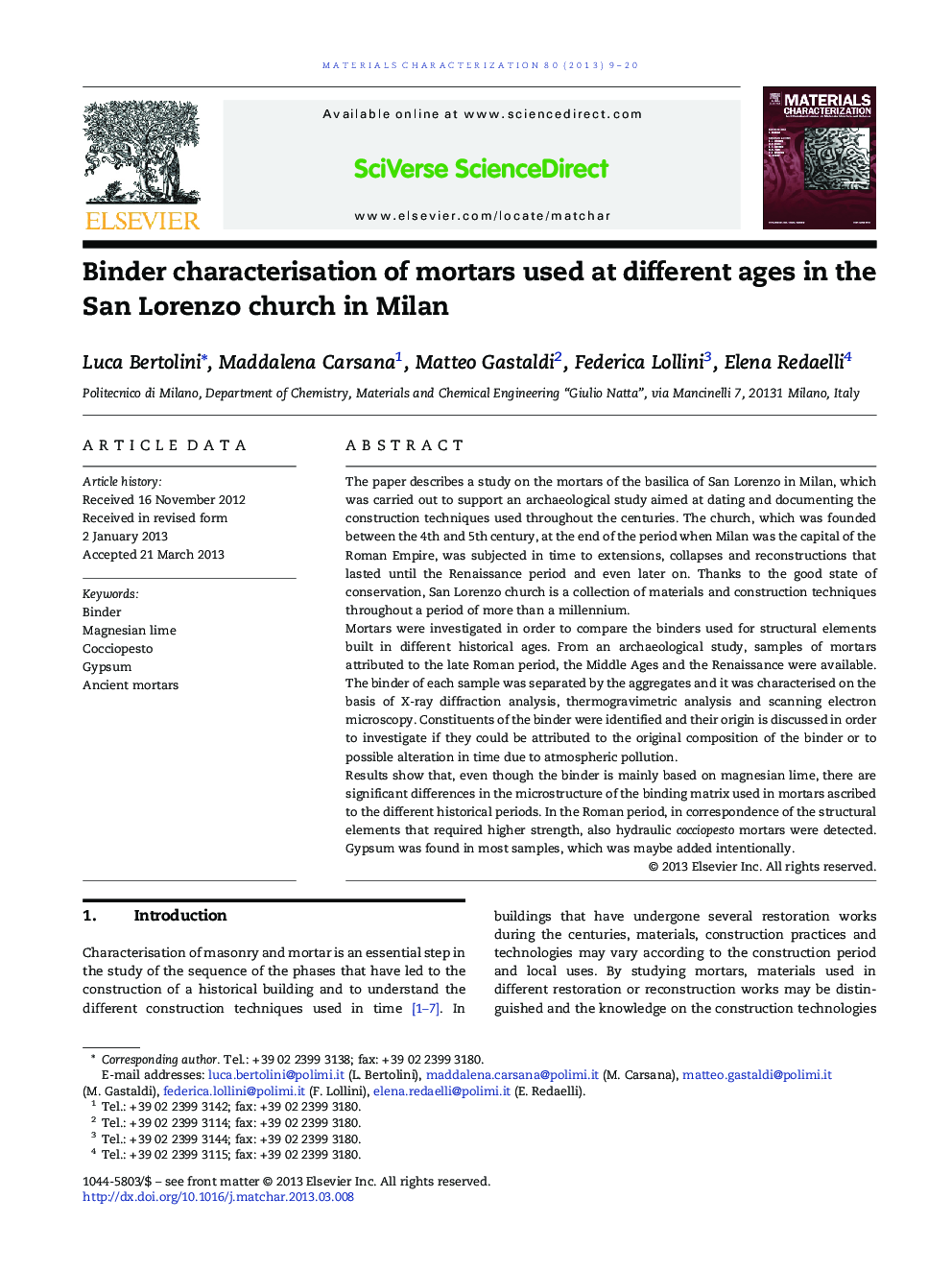| Article ID | Journal | Published Year | Pages | File Type |
|---|---|---|---|---|
| 1571199 | Materials Characterization | 2013 | 12 Pages |
•Binders of mortars of San Lorenzo church in Milan were investigated.•Roman, Middle Ages and Renaissance samples were studied by XRD, TG and SEM.•Magnesian-lime binders containing silico-aluminates were used in all periods.•Cocciopesto hydraulic mortars were used only in the Roman period.•Gypsum was found in most samples, which was maybe added intentionally.
The paper describes a study on the mortars of the basilica of San Lorenzo in Milan, which was carried out to support an archaeological study aimed at dating and documenting the construction techniques used throughout the centuries. The church, which was founded between the 4th and 5th century, at the end of the period when Milan was the capital of the Roman Empire, was subjected in time to extensions, collapses and reconstructions that lasted until the Renaissance period and even later on. Thanks to the good state of conservation, San Lorenzo church is a collection of materials and construction techniques throughout a period of more than a millennium.Mortars were investigated in order to compare the binders used for structural elements built in different historical ages. From an archaeological study, samples of mortars attributed to the late Roman period, the Middle Ages and the Renaissance were available. The binder of each sample was separated by the aggregates and it was characterised on the basis of X-ray diffraction analysis, thermogravimetric analysis and scanning electron microscopy. Constituents of the binder were identified and their origin is discussed in order to investigate if they could be attributed to the original composition of the binder or to possible alteration in time due to atmospheric pollution.Results show that, even though the binder is mainly based on magnesian lime, there are significant differences in the microstructure of the binding matrix used in mortars ascribed to the different historical periods. In the Roman period, in correspondence of the structural elements that required higher strength, also hydraulic cocciopesto mortars were detected. Gypsum was found in most samples, which was maybe added intentionally.
Graphical AbstractFigure optionsDownload full-size imageDownload as PowerPoint slide
